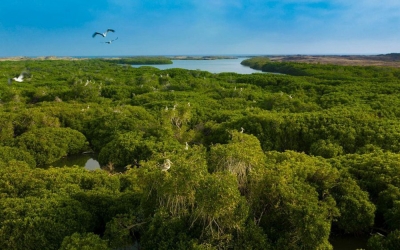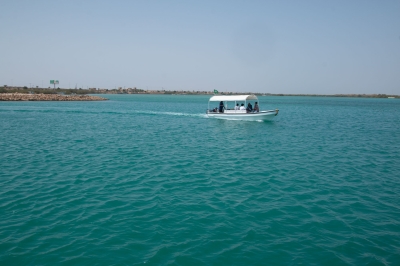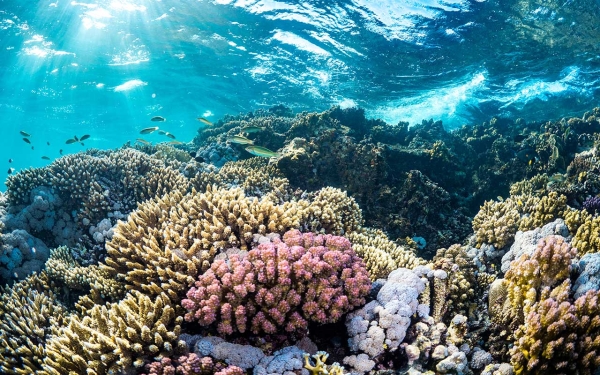
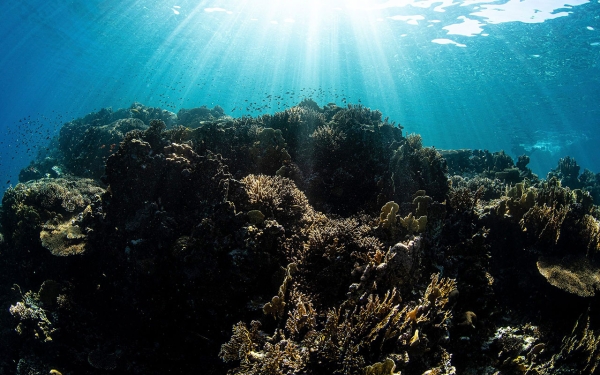
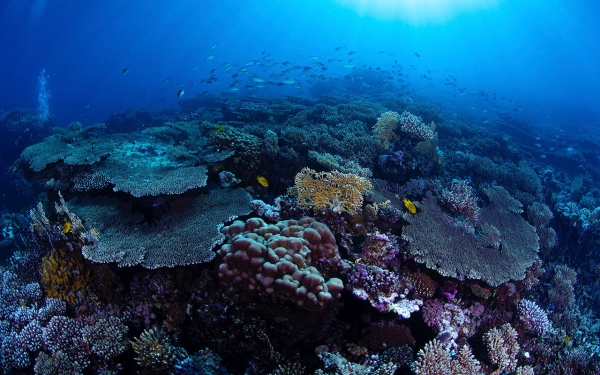
The Coral Reefs in the Kingdom of Saudi Arabia are solid limestone rocks formed in layers with small tubular cavities inhabited by coral animals. They are spread across the territorial waters of the Kingdom in the Red Sea and the Arabian Gulf, covering an area of about 6,660 km² in the Kingdom. Their diversity is less in the Arabian Gulf due to the lack of suitable environmental conditions for coral growth. The Red Sea is considered one of the richest seas in the world in terms of diverse coral reefs. There are 310 species of coral reefs in the territorial waters of the Kingdom in the Red Sea, while there are sixty species of hard corals in the waters of the Arabian Gulf.
The coral reefs in the Red Sea
The coral reefs in the Red Sea are characterized by their density and diversity, as the Red Sea contains 310 species of corals, including 270 species of hard corals, in addition to forty species of soft corals. Among the most important species is the fringing reef, which grows near the coast due to the presence of an environment conducive to its proliferation, characterized by limited rainfall, the absence of rivers, moderate water temperatures, and low tides. Coral reefs proliferate further away from the estuaries of valleys where silt increases and water becomes turbid. They also proliferate away from crowded urban areas and coastal developments. Among the suitable environmental conditions that have increased coral growth in the Red Sea are the expansion of the shallow continental shelf, and the Red Sea's location in the tropical zone, where sunlight is abundant, water temperatures are high, salinity levels are moderate, and the water is clear.
Most of the Red Sea islands were formed from the remnants of coral animals, and most islands are situated on coral reefs and are surrounded by barriers and coral rings that are submerged at high tide and reveal a few of their tops at low tide. The coral reefs in the sea increase as we move southward.
The shapes of the coral reefs in the Red Sea
The forms of coral reefs in the Red Sea vary, with some taking the form of coral fringes that cling to the shores and around the islands, formed by the accumulation of coral, organic materials, and limestone. Often, they pose an obstacle to ship movement due to their proximity to the surface and their ruggedness. Some of them emerge as heads on the water's surface, while others form as barrier reefs far from the shore, serving as anchorage points for ships and boats or as barriers protecting them from the winds. Coral reefs sometimes appear in the form of rings surrounding shallow lagoons. However, these formations may not always be fully developed, resembling fjords in some instances.
Coral reef locations in the Red Sea
Given the length of the Kingdom's coastline along the Red Sea, which reaches 2,400 km, representing 80 percent of the eastern coast of the Red Sea, many groups of coral reefs have spread parallel to it and around its islands, with scattered groups inside the sea. Coral reefs proliferate near the beginning of the Gulf of Aqaba, specifically between the coast and the islands of Tiran and Sanafir, and parallel to the Saudi coast in the northern Red Sea. They become more abundant near the coast up to the city of al-Lith, where they then begin to expand and scatter, reaching their highest extension inside the sea up to fifty nautical miles between the cities of al-Qunfudhah and al-Lith. Afterward, they approach the coast and its islands again until the end of the coast to the south.
Among the most important reefs in the Red Sea are: Abu Shosha, al-Balad, al-Baham, al-Shaqaiq, al-Jadeer, al-Dark, Mubarak, Abu Sadin, al-Sabaa, al-Shuaiba, al-Saflani, al-Khamsa, Nizar, al-Qarsh, al-Masmary, Abu Madafi, al-Kabir, al-Shuja'a, al-Jarm, al-Darah, and Janabiyat.
The coral reefs in the Arabian Gulf
In the waters of the Arabian Gulf, there are about sixty types of coral, which is low in diversity compared to the Red Sea. The reason for this is due to the increased salinity of the Arabian Gulf waters and the variation in temperature. This comes in addition to pollution, oil residues, the destruction of forests near coasts such as mangroves and seagrass meadows, the proliferation of industrial and residential activities along the Gulf coastlines, and overfishing. Also, coral reefs in the Arabian Gulf are suffocated by sedimentation from coastal sand and mud movement.
The phenomenon of coral bleaching in the Gulf
The issue of coral bleaching resulting from increased temperatures has become one of the phenomena affecting coral reefs in the Arabian Gulf and worldwide. The mortality rate of the coral reefs surrounding Abu Ali Island in the Arabian Gulf reached 99 percent in 1999. The same percentage applies to the coral around the islands of Kiran and Jana.
The importance of coral islands in the Arabian Gulf
The coral islands in the Arabian Gulf, such as Kiran, Karin, Harqus, Jana, and Abu Ali, have high environmental benefits for the region. These islands are considered breeding grounds for some animals, such as Socotra cormorants, Arctic Tern (sterna), and marine turtles in the Gulf. Every year, one thousand marine turtles visit these islands. Green turtles often use coral reefs as mating sites. These islands are of great importance to fishermen, as they attract various types of fish. Coral reef fishing constitutes 40 percent of the total fishing. Coral islands hold significant tourist value as they serve as destinations for diving enthusiasts.
Types of coral reefs in the Arabian Gulf
Among the types of coral reefs found in the waters of the Arabian Gulf are (al-Fushut, al-Qita', and al-Qassar). Examples of these in the northern region include Khalaweh Qita', Baladani Qita', Um al-Sahal Qassar, Kash Fushut, and Najwah Fushut. On the southern front, there is the Um Jana Fushut located opposite Ras Abu Qamis.
Related quizzes
Related articles

